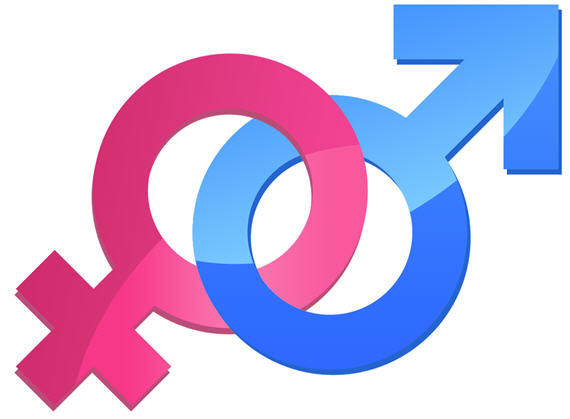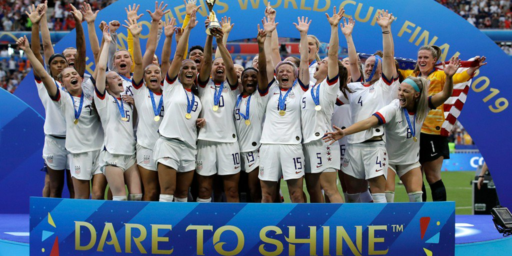Women’s Games as ‘Warm-Up’ Acts
Under pressure from the Feds, the NCAA is cracking down on colleges who put women's games ahead of men's games, which some say relegates them to "warm-up act" status.
Under pressure from the Feds, the NCAA is cracking down on colleges who put women’s games ahead of men’s games, which some say relegates them to “warm-up act” status.
A recent Great Lakes Intercollegiate Athletic Conference action to reverse the order of its men’s and women’s basketball games during conference doubleheaders this year in response to an inquiry from the U.S. Department of Education’s Office for Civil Rights is generating attention from other conferences.
To some in Division III, the GLIAC’s idea of rotating the start times annually for men and women is not necessarily new. The Wisconsin Intercollegiate Athletic Conference, the New England Small College Athletic Conference and the University Athletic Association are among several Division III leagues that already use this system in basketball and other sports in which the men’s and women’s teams play twin bills.
Other conferences employ a midseason rotation. The North Atlantic Conference, for example, has its men’s teams play first in January and the women first in February. That order flip-flops annually. “It works,” said NAC Commissioner Julie Muller.
But the fact that the GLIAC action came after a formal complaint was filed with the OCR adds a new twist. Conferences that aren’t currently rotating start times may consider doing so.
Amusingly, however, many actually prefer the first game.
As was the case in discussions within Division II’s GLIAC, opinions vary on whether the first or second game offers the optimal time slot. In its inquiry, the OCR cited a complaint filed against the GLIAC stating that scheduling the women’s games first made them appear as “warm-up” contests for the men’s games. While not necessarily agreeing with that assessment, the OCR nonetheless reasoned that each gender ought to have equitable opportunities to have its games seen, which leads some to believe that games close to the dinner hour may not be desired.
But a sampling of Division III members reveals some sentiment for the lead-off spot. Even though “prime time” is often viewed as the nightcap in a doubleheader, many coaches and administrators from a logistics perspective like the certainty of the opening game.
WIAC Commissioner Gary Karner said coaches in his league prefer Game 1 because they can base their pregame routine on a known time as opposed to approximating when Game 2 will begin.
Silly as all this sounds — and, frankly, it sounds pretty silly to me — there are legitimate issues:
Malloy said that’s a cost-effective system that also has the student-athlete’s best interests as far as time demands in mind since doubleheaders could result in an eight- or nine-hour day for teams that would travel together.
Missed class time is another factor. Ledwin said her faculty athletics representatives raised the issue of alternating game times for men and women in soccer and basketball at their May meeting.
“Their concern was about a disproportionate number of women consistently missing classes because of playing first, regardless of whether they were home or away, just because of the times most classes are scheduled,” she said. “We work hard as a conference to alleviate missed class time in general, but we hadn’t focused on the gender inequity with doubleheaders.”
Attendance is another concern, though perhaps not the primary one. Karner said a number of the women’s programs in the WIAC draw just as well or better than their men’s counterparts. GLIAC Commissioner Dell Robinson pointed that out for his league as well, saying that the new rotation may end up highlighting some of the conference’s more prominent women’s programs.
That’s actually pretty interesting. When I first saw the teaser for the story at Inside Higher Ed, I presumed that attendance was indeed the rationale and figured it perfectly reasonable to give the more prominent time slot to the team people actually wanted to see. But, if that’s not generally the main concern and there are legitimate negative effects on the students to always playing the first game, then a rotation makes sense. Or, you know, not scheduling games when they’ll require missing class time.







When I went to Rutgers in the late 80s, the men’s basketball team was consistently in the cellar of the Atlantic 10 — one season they one exactly three games all season. The women’s team, on the other hand, was consistent in the Top 25 in the AP Poll and made the NCAA Tournament all four years I was there.
The Athletic Department reversed the order of the doubleheader home games (men first instead of women) when they realized that people were leaving after the women’s game was over.
There is no obstacle to women’s sports becoming THE major draw for an evening of college athletics. I went to undergraduate at UC Santa Barbara and the women’s basketball team has become a big deal there. And UC Santa Barbara is small potatoes compared to women’s sports programs at schools like UT-Knoxville, Stanford, UConn, Kansas, and — you know what, the list goes on and on. Women’s sports, particularly basketball, can and often does, draw a big crowd. Universities that schedule women’s sports at inconvenient times are missing out on opportunities for publicity and revenue. So I’m confident that the market will take care of this issue whether the NCAA does anything about it or not.
//There is no obstacle to women’s sports becoming THE major draw for an evening of college athletics.//
Well, the main obstacle is lack of fan interest. Other than perhaps soccer, I don’t know of any sport that the media has done its best to pump up and failed miserably than women’s basketball. Outside of particular places, it’s distantly behind men’s basketball in terms of fan interest. Men prefer to watch men and women prefer to watch what the men around them are watching. With the possible exception of Connecticut (and maybe UCSB – it’s outside my radar) the relative fan interest in women’s basketball is dwarfed by the interest in men’s.
In that sense, I think that the market has already worked itself out. The question is to what extent we should ignore the market in favor of equality. That’s not a rhetorical question to me as I do believe that some intervention is required. My father-in-law was the first women’s basketball head coach at a Division I(-A) school and the pre-Title IX accommodations for women’s sports were nothing short of pathetic. A lot of people rip on Title IX, but it was at worst an overreaching solution to a real problem, in my view.
Trumwill,
Like I said above, I’d count Rutgers as a school where the Women’s BB program still draws a pretty loyal fan base of it’s own outside of any association with the men’s team.
But yea, it’s largely rare.
Doug, that was why I carved out an exception for Connecticut. They have an outstanding women’s team compared to so-so men’s. Sounds like Rutgers is in the same category. Some schools, like Alabama-Huntsville and the University of Denver, pump up hockey in lieu of having a football team at all. So it can work out that way with tertiary sports. But it’s mostly the province of schools with floundering athletics programs in the big sports. Connecticut is kind of an exception with respectable football and basketball programs, but at the time they got their women’s basketball program in the stratosphere they were a Division I-AA football program.
Both of the colleges I attended did not have any back-to-back games, and it seems in retrospect that this was more of a disadvantage to women’s sports than order.
Penn State used to schedule women’s volleyball games on football weekends, so that people going to the football game could (either before or after depending on kickoff time) go see the volleyball game too. These games would sell out.
Last year, due to similar complaints, they stopped doing that. The problem is that now hardly anyone was in town when they played so they never got to play in front of big crowds.
Thankfully, they’re changed their minds and are bringing the football weekend games back this year.